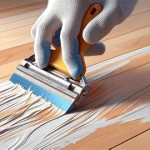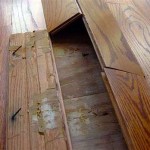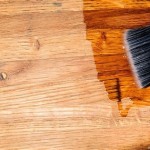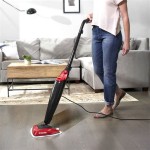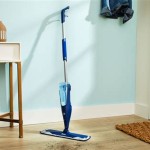How To Shine Wood Floors Naturally
Maintaining the luster of wood floors often involves commercially produced cleaners and polishes. However, for those seeking natural alternatives, several effective methods can achieve a beautiful shine without resorting to harsh chemicals. These methods rely on readily available ingredients, are environmentally friendly, and can be gentler on delicate wood surfaces.
Understanding Your Wood Floor
Before embarking on any cleaning or polishing regimen, it is crucial to identify the type of finish on the wood floor. Different finishes require different care. Surface finishes, such as polyurethane and varnish, create a protective layer over the wood and are generally more resilient. Penetrating finishes, like oil and wax, soak into the wood and require more specialized maintenance. Knowing the finish type will help determine the most suitable natural cleaning and polishing methods.
One way to determine the finish is the water bead test. Place a few drops of water on the floor in an inconspicuous area. If the water beads up, the floor likely has a surface finish. If the water absorbs into the wood, it suggests a penetrating finish. Consulting the manufacturer's documentation or contacting a flooring professional can provide definitive answers if the water test is inconclusive.
Regular Cleaning for a Natural Shine
The foundation of a naturally shiny wood floor is regular cleaning to remove dust, dirt, and grime. These particles can scratch the surface and dull the finish over time. Sweeping or dry mopping with a microfiber cloth should be performed daily or as needed to prevent accumulation. Vacuuming is also an option, but it's essential to use a floor brush attachment to avoid scratching the wood.
For deeper cleaning, a damp mop can be used. Avoid excessive water, as it can damage the wood, particularly with penetrating finishes. Mix a small amount of gentle, natural soap, such as castile soap, with warm water. Wring the mop thoroughly until it is barely damp before mopping the floor. Work in small sections and dry the floor immediately with a clean, soft cloth to prevent watermarks and streaking.
Natural Polishing Techniques
Once the floor is clean and dry, natural polishing can enhance its shine. Several options utilize common household ingredients. One effective method involves mixing equal parts white vinegar and olive oil. Apply a small amount of this mixture to a soft cloth and buff the floor in small, circular motions. The vinegar helps clean any remaining residue, while the olive oil conditions the wood and adds shine. This method works particularly well for surface finishes.
Another popular natural polish utilizes black tea. The tannins in black tea react with the wood, creating a subtle, warm glow. Brew a strong pot of black tea, let it cool completely, and apply it to the floor with a soft cloth, working in small sections. Like the vinegar and olive oil method, buff the floor in circular motions and dry immediately with a clean cloth. Black tea polish is generally recommended for lighter wood floors, as it can darken the wood slightly.
Maintaining the Natural Shine
After achieving a natural shine, maintaining it requires ongoing care. Continue with the regular cleaning routine of sweeping or dry mopping to prevent dirt buildup. Avoid wearing shoes indoors whenever possible, as shoes can track in dirt and grit that can scratch the floor. Use area rugs in high-traffic areas to protect the wood from wear and tear. Reapply a natural polish as needed, typically every few months, to maintain the desired level of shine.
Addressing spills promptly is crucial to prevent staining and damage. Blot spills immediately with a clean cloth, avoiding rubbing, which can spread the liquid. For sticky spills, use a slightly damp cloth to remove the residue and then dry the area thoroughly.
Protecting Your Wood Floors
Protecting wood floors from sun damage is crucial for maintaining their natural shine. Prolonged exposure to sunlight can fade the wood and cause it to dry out, making it more susceptible to cracking. Use curtains, blinds, or window films to filter direct sunlight, especially during peak hours. Rearranging furniture periodically can also help ensure even exposure to sunlight and prevent localized fading.
Furniture pads are another essential tool for protecting wood floors. Place felt or rubber pads under the legs of all furniture, including chairs, tables, and sofas. These pads prevent scratches and dents caused by moving furniture and distribute weight evenly, reducing the risk of indentation.

Natural Diy Solutions For Shiny Healthy Hardwood Floors

3 Ingredient Wood Floor Polish Diy Shine At Home

How To Get Your Floors Shine At Home With The Barkers

Best Natural Homemade Floor Cleaner Nature S Nurture

Non Toxic All Natural Rer For Hardwood Floors Bren Did

How To Clean Hardwood Floors Make Them Shine Naturally With Vinegar House Keeper Youtube

Naturally Clean And Shine Hardwood Floors The Ultimate Guide California Flooring Design

Diy Hardwood Floor Cleaner Safe Effective Homemade Recipe

Diy Natural Wood Cleaner And Polish Rhythms Of Play

Non Toxic All Natural Rer For Hardwood Floors Bren Did

